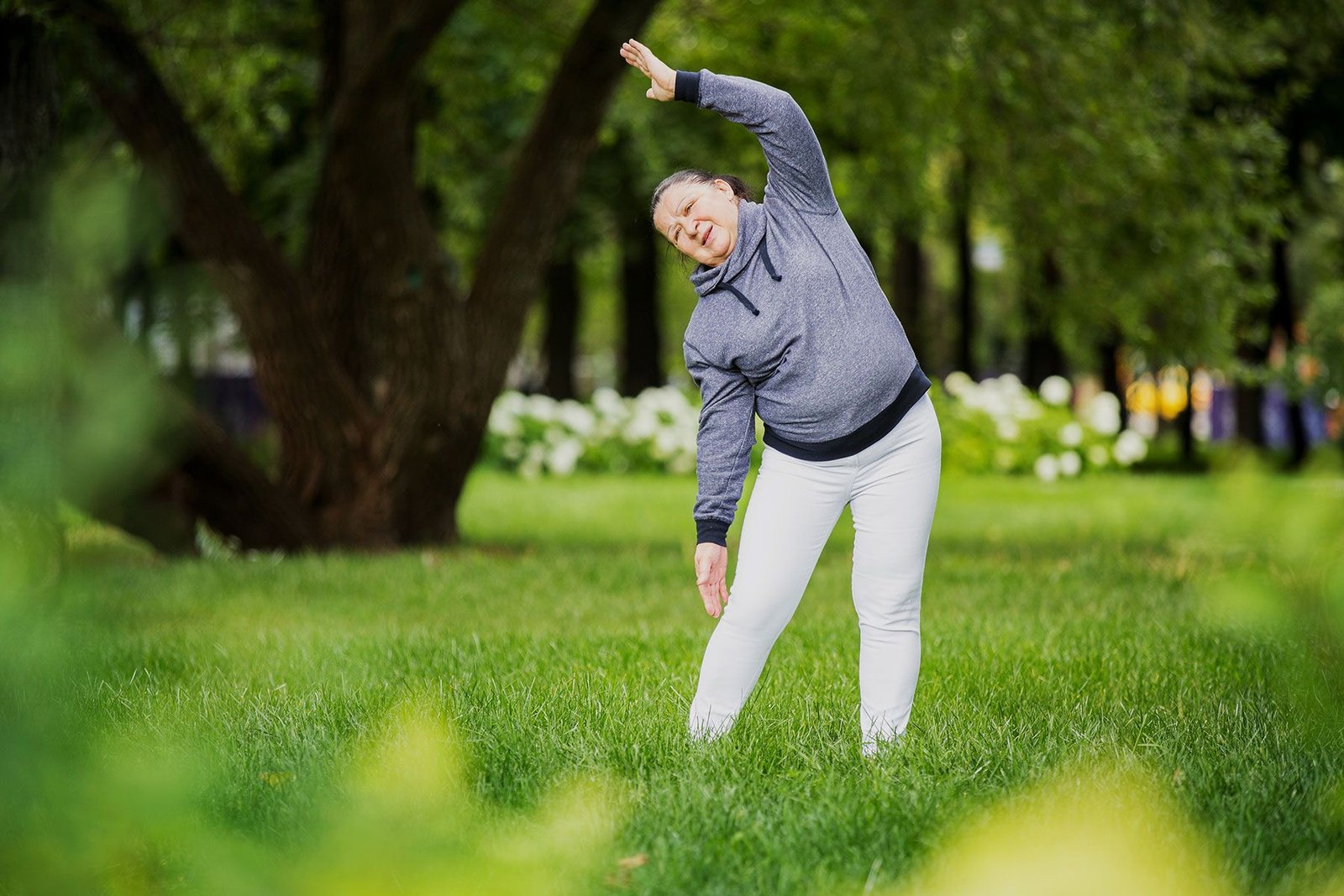July 29, 2022 – Odds are this story is all about you. How do I know?
First, a little motivational reality: Nearly two out of five American adults – 96 million of us – have prediabetes, according to the latest U.S. government estimate.
As the name implies, prediabetes is a kind of metabolic purgatory. It means you have chronically elevated blood sugar, and you’re on the road to type 2 diabetes if you don’t bring it under control.
And type 2: About 37 million Americans live with it every day. That means about 130 million people in the U.S. have problems processing glucose out of their bloodstream.
If that sounds dire, well, it is. Odds are you’re caught up in that web because so many American adults are. Fortunately, there’s a proven way to avoid the whole mess.
Exercise is the simplest, cheapest, and most accessible preventive/management medicine you can take.
The more you move, and the more often you do it, the better your body gets at controlling the flow of glucose into and out of your bloodstream.
All it takes to understand it is four quick, easy lessons
Lesson 1: Blood Sugar Basics
A healthy 150-pound adult has just one teaspoon of sugar – 4 grams – swirling around in their blood at any given time.
That fact is incredible, considering how much sugar the average American consumes in a day (17 teaspoons) and how important that minuscule supply is to our survival (the brain takes up 60% of it).
So where does it all go?
Your body uses some for energy. Your muscles and liver store some in the form of glycogen. Anything left over is converted to fat.
It works in reverse when you go a few hours between meals. Your body keeps your blood levels steady by taking some of that glycogen out of your muscles and liver, changing it back to glucose, and returning it to your bloodstream.
Meanwhile, your body mostly uses fat for fuel while you’re at rest, which helps preserve that stored glycogen for when you really need it: during exercise.
That’s why physical activity is such a key element in controlling blood sugar. Now, the first question many people have is: “What exercise should I do?” Another way of asking, “What’s the best exercise for managing my blood sugar?”
The quick answer is: Any movement is positive. The longer answer is: Different types of exercise help you control blood sugar in different ways. Same with different intensities within each category.
And we’ll get into all that. But let’s start with a simpler question: What’s the least amount of exercise you can do and still get a measurable benefit?
Lesson 2: A Little Movement Can Go a Long Way
Spencer Nadolsky, DO, is a board-certified family doctor who specializes in treating patients with obesity and type 2 diabetes. He’s also a former Division I college heavyweight wrestler and the founder of LiftRx, an online strength-coaching business.
So when Nadolsky talks to his patients about exercise, you’d expect him to focus on resistance training.
Nope.
“I try to get them to walk,” he says. Why walking? “It’s not overly taxing, most patients can start right away, and they can progress quickly.”
The “start right away” part is crucial. They don’t need individual instruction, special equipment, or a structured training program.
The benefits come right away, according to the American College of Sports Medicine. In its recent position paper on exercise and type 2 diabetes, it notes that any type of physical activity increases the transport of glucose out of the blood and into the muscles.
Exercise also has a profound effect on your body’s response to insulin, the hormone most responsible for controlling blood sugar. Insulin sensitivity remains elevated up to 72 hours after exercise.
A 2016 study found that walking 11 miles a week was enough to prevent prediabetes from becoming full-blown type 2 diabetes. If you walk at a moderate pace (4 mph), you can cover 11 miles in just under 3 hours. That’s 30 minutes a day, 5 to 6 days a week.
While a little exercise is good, more is better. A long-running study on preventing type 2 diabetes found that the more exercise participants did, the lower their risk.
But at some point, “do more” stops being a realistic option. Even if you can tolerate the repetition, you eventually run out of hours in the day.
Fortunately, there’s another option, one that helps you control blood sugar in a fraction of the time.
Lesson 3: Harder Work Brings Faster Results
Martin Gibala, PhD, published his first study on high-intensity interval training (HIIT) in 2005, when he was an assistant professor of exercise science at McMaster University in Hamilton, Ontario.
He’s now chairman of the department, thanks in part to the dozens of HIIT studies he’s published since then. He is also the author of The One-Minute Workout: Science Shows a Way to Get Fit That’s Smarter, Faster, Shorter.
You can find any number of ways to do HIIT workouts. For example, after a short warmup, you could go really hard on a stationary bike for 30 seconds, recover at a slower pace for 60 seconds, and repeat several times. In just 10 minutes, you can get a pretty good workout.
And you don’t even have to go hard. As Gibala explains in his book, interval walking – moving faster, then slower – offers more fitness benefits than simply striding along at your normal pace.
HIIT helps you manage blood sugar in two important ways:
1. It offers meaningful reductions in less time.
In a 2012 study, Gibala’s team showed that a single HIIT workout improved post-meal glucose response among people with type 2 diabetes.
The same holds true over time. When analyzing hemoglobin A1c (average blood sugar levels over the past 3 months), high-intensity intervals reduced blood sugar at least as well as traditional cardio, but with much shorter workouts.
As a bonus, among people with type 2 diabetes, HIIT may be better at reducing body weight and body fat.
2. HIIT uses more muscle fibers.
When you do cardio at a steady pace, you’re mostly using the smaller, slow-twitch muscle fibers. But when you go hard and fast, you’re also recruiting the bigger, fast-twitch fibers.
Using more total muscle mass means you use more total energy, much of which comes from the glycogen stored in those muscles. Your muscles then pull glucose from your blood to replace the glycogen.
Over time, Gibala says, your muscles increase the amount of glycogen they hold in reserve, even though the muscles don’t necessarily increase in size.
But what if you did build bigger muscles?
Lesson 4: Lifting Gives You Room to Grow
Nadolsky once joked that he doesn’t lift weights to look better. He does it to create more space to store carbs. (As his online followers would know, dietary carbohydrates are broken down into glucose and other sugars during digestion. The glycogen in your muscles and liver is the storage form of those carbs.)
While it takes time to build bigger muscles, the process offers benefits right away.
Strength training, like any other type of exercise, will sensitize your muscles to insulin, Nadolsky says. That means your muscles will be primed to pull more glucose out of your bloodstream in the hours after your workout.
With months of consistent lifting, people with type 2 diabetes will typically increase muscle size and strength, improve blood pressure and insulin sensitivity, and add bone mineral density, all by about 10% to 15%.
But there’s no need to limit yourself to one form of exercise. “In the long run, all of them have benefits,” Nadolsky says. “My advice is to get a mix of all of it.”
Your weekly mix might include two workouts combining strength training and HIIT, and two longer cardio sessions. Or you could walk 5 or 6 days a week, but on 2 or 3 of those days vary your walking speed between a faster and slower pace.
For blood sugar management, a little exercise is always better than no exercise. More exercise brings more benefits. But consistent exercise is best of all.






